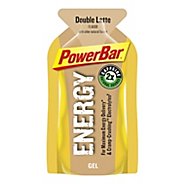Ok, I was inspired to write today after my wonderful run in the woods this morning. No, it was not the best run of my life, but it's Spring and the weather was beautiful. I was outside...........enjoying all that nature has to offer. To me, it does not get much better than that. Of course I know not everyone is as enthusiastic as I am about hitting the trails, but maybe just maybe you will, at the very least, find your interest peeked after reading this article. I too was a skeptic about the idea of running in the woods, on gravel, through the dirt and mud, streams, puddles, creeks, etc. that usually occupy most park trails. If you choose to run trails in the Fall or Winter, then you can add snow and ice to the list of obstacles you must traverse to get through a run. However, after my first venture into the world of trail running, I rediscovered something I truly loved; Nature. Yes, believe it or not, we get to experience one of the greatest gifts of life our planet offers at its very best anytime we want and best of all, it's totally and completely free! Lace up a pair of running shoes and take off on your own little adventure. I can't tell you how many times I've been on the trails and seen such amazing things like rabbits, deer, red tailed hawks, geese, foxes, owls, raccoons, and of course the occasional runner (HA!) All this for the price of a Powerade® Zero (my personal favorite) or Gatorade® and a little snack.
Let me preface all of this by stating up front that trailing running is not the easiest running you will ever do. Will you run the same pace you run on the road, no. Will you run as far as you run on the road, no again. What trail running will do for you is help strengthen your core, ankles, calfs, quads, and hamstrings while improving your cardiovascular health and at the same time help protect your knees and ankles with a softer base to help absorb the impact. I don't know about everyone else but as I age, I need to protect my joints and muscles as much as possible so I can keep doing the things I love. Stretching everyday is another great way to maintain strength and flexibility as we age, but that's another issue. Anyway, it just makes sense to take advantage of something that is available everywhere, will improve your overall health and strength, and cost nothing. The other great benefit I have found from doing some consistent trail training is that I can generally run further, faster, and with less effort out on the road. That alone should be incentive enough for most runners. Improve your times with nothing more than a change of venue for your training runs. Now that's powerful stuff.
 |
| Adidas Vigor TR 2 |
Now that I have you thinking a bit, let's look at what you will need to enjoy your run. As for clothing, you can wear the same thing you wear on any other run. What you really need to focus on
is your footwear. I cannot say this enough; Trail Shoes Trail Shoes Trail Shoes. I have run trails in both regular road shoes and trail specific shoes and there is no comparison with regards to comfort and stability on the trails. Plus, who wants to run through a muddy creek in their favorite running shoes. Trails shoes are made specifically to perform in adverse conditions. I have run in several different manufacturers shoes, but I must say my current favorite is the Adidas Vigor. I purchased this pair recently and went for my first run in them about a week ago. I was surprised to find how well the tread gripped the varying material on the trails and how stable they felt. I also found them well cushioned and left my feet feeling relaxed after a long run. As for socks, I highly recommend getting some crew running socks like the Balega Trail Buster II.
 |
| Balega Trail Buster II |
A crew sock will help keep the dirt and rocks out of your shoe making stops to clean your shoes out a lot less frequent. Of course there are a ton of different shoes and socks available, so please do some research and find what works best for you. That's really about it, all of your other running gear works just the same on the trails. So make a plan, set a date and get outside and go for a run. In the words of the singing cowboy Roy Rogers "Happy Trails to You, until We Meet Again"!





